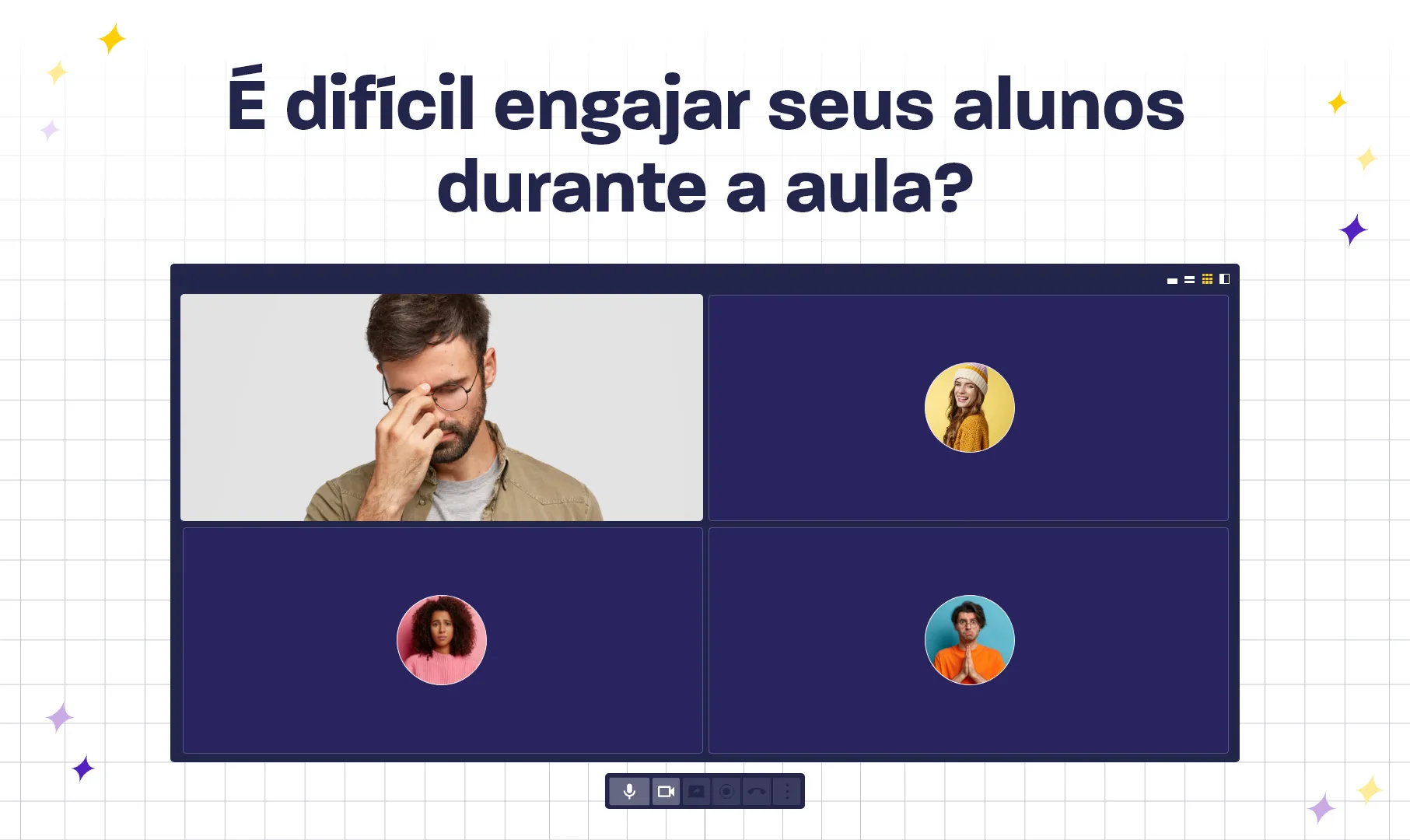How to engage your students in an online class?

Strytegy
December 15, 2021
Checkout some tips to retain your students’ attention and increase participation during an online class.

Distance learning has been a growing trend for some time, but the Covid pandemic has accelerated its adoption exponentially, and now all kinds of education institutions are applying it. With that, many teachers had to adapt quickly to this reality, and even today this adaptation still isn’t perfect.
One of the main challenges in virtual learning is to keep students’ engagement in an environment that does not favor collaboration and active participation, and also offers a lot of distractions. Creating engaging experiences that capture students’ attention is not an easy task, and that is why we listed here some resources that can help.
We divided our tips in three main groups: the first one gathers ways to diversify the way you present content; the second will help you create collaborative experiences during class; and the third shows you ways to foster participation outside the virtual classroom as well.
Useful resources to present your content
With the attention span getting smaller and smaller, it is important to find ways to get students' attention constantly. One way to do this is to diversify how you display your content: mix all kinds of visual resources!
Most teachers use slides during their lectures, but the internet allows you to include other types of resources in your presentations. The most simple way to do this is to show a video related to your subject. You can easily find many examples on youtube.
Another idea is to invest in more visual teaching methods, such as creating a diagram, flowchart, infographic or mental map. There are completely free tools, like Strytegy, that offer you a virtual whiteboard experience where you can create all these kinds of visuals, whether you prefer to prepare them before class, or assemble them live along with your students.
The important thing is to diversify: use slides, diagrams, videos, and whatever else you can think of.
Creating collaborative experiences during class
Even if you vary the way you present your content, students can end up getting ored and distracted if you are talking non-stop. Therefore, many teachers try to create collaboration moments to incentivize collaboration. It might seem like this is much harder in an online environment, but actually there are many tools that can make this collaboration possible, and even fun.
How about creating a pop quiz or game your students can play in real-time? Kahoot, for example, allows you to assemble these experiences and share your questionnaires with a simple link.
You can also create all sorts of group dynamics and exercises during class. What if you challenge your students to create a mental map explaining what they just learned? Or maybe do a brainstorming session to find a solution to the case study just presented? To create these experiences, you need a platform that gives you the freedom to create and allows the group to collaborate in real-time. In Strytegy you can do all this without having to pay for your account.
Collaborating outside the classroom
Although the in-class experience might be the most important moment of interaction between a teacher and its students, distance learning can also benefit a lot when you take advantage of asynchronous collaboration to complement the learning process.
One of the best ways to promote this engagement outside of class is through discussion forums, where students can expose their ideas, debate, ask questions and help each other. The teacher role is to incentivize the use of this resource and mediate the debates. Slack, for example, could be an interesting platform to create these discussion forums.
Another, less traditional, way to promote this engagement is through the creation of templates. Many times, teachers create their own methods and diagrams that help the study process or facilitate the comprehension of a certain subject. This method can become a template, which is nothing more than a sequence of fields, questions or items the student can fill out to reach the desired solution or understanding more easily. You can create exclusive templates for your class and share them with students so they can use them at home while studying or preparing homework. For business professors, Strytegy has some templates ready for use in the library, but you can also use available shapes in the whiteboard to create your own styles.
Conclusion
Engaging an audience is never simple, especially in an online environment. But we hope these tips can help you improve your student’s experience during class and foster better participation and learning for everyone!
